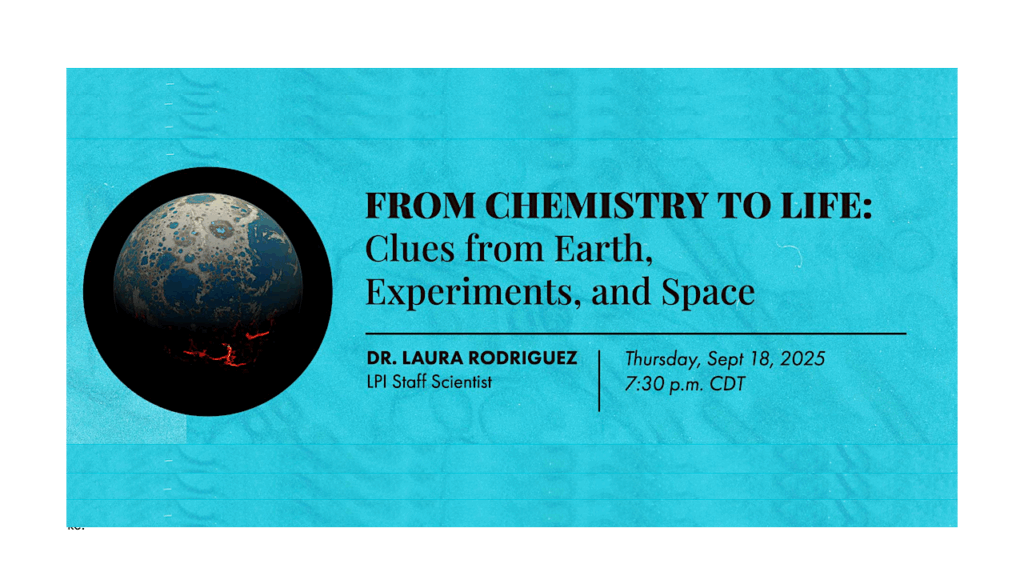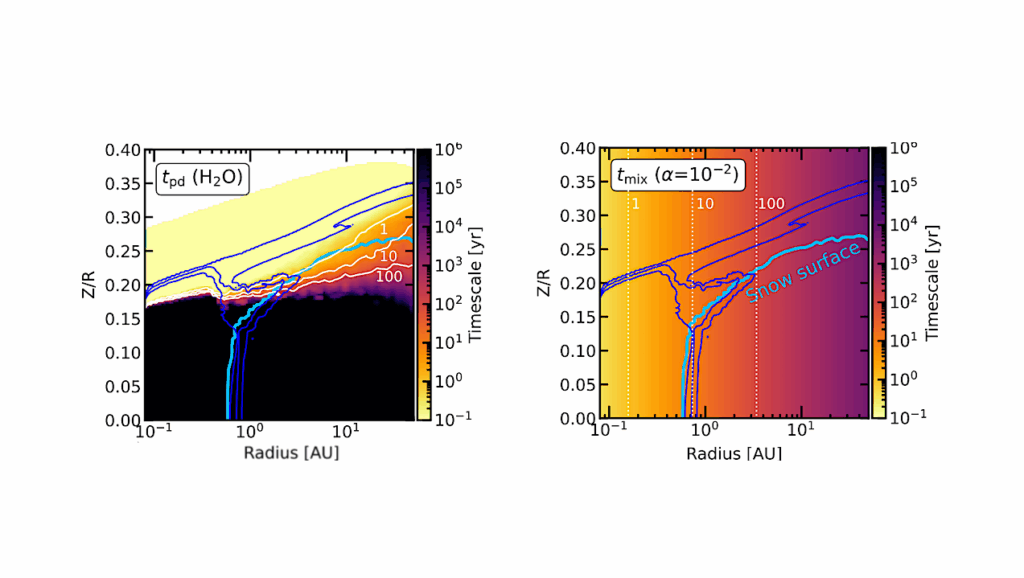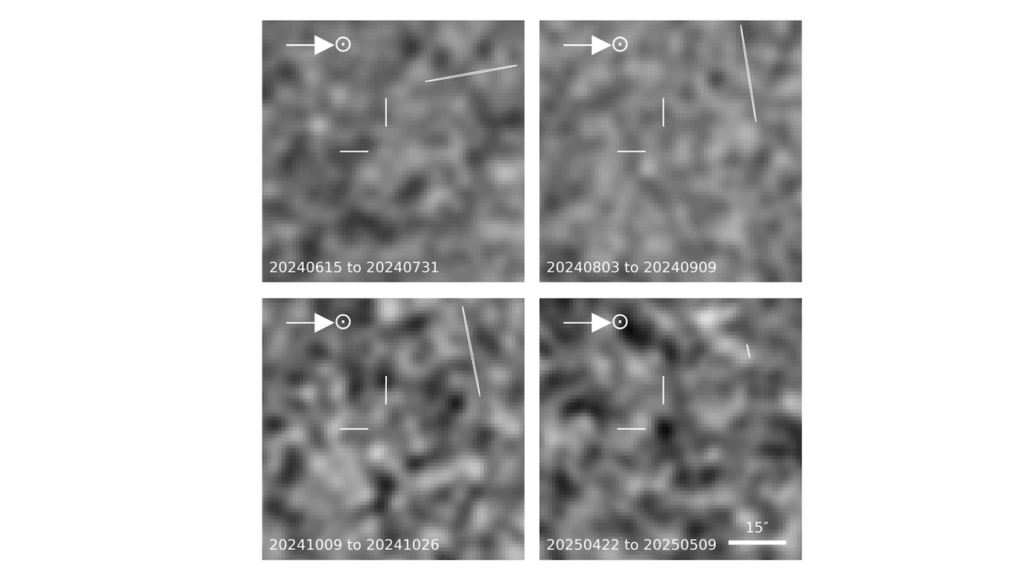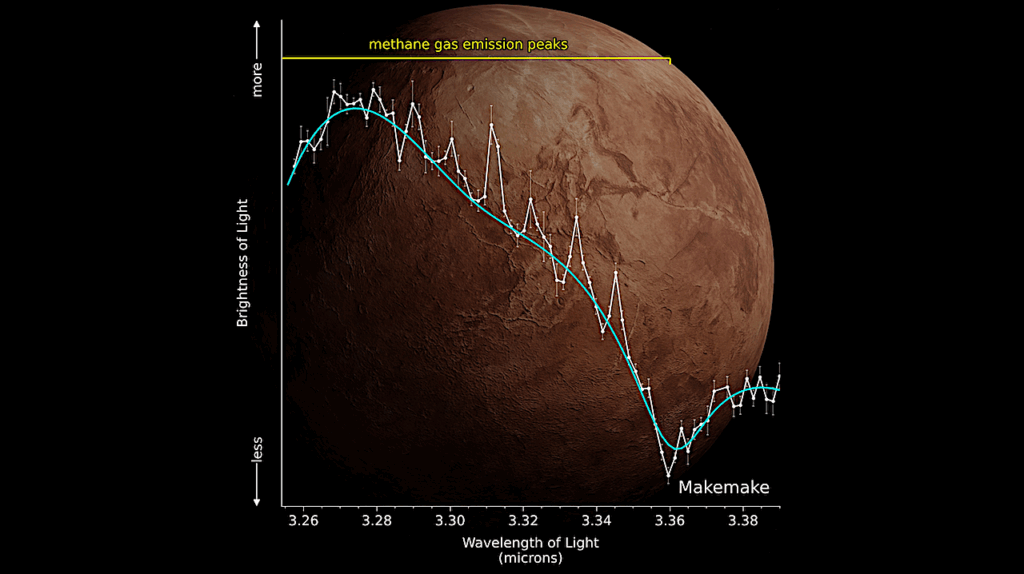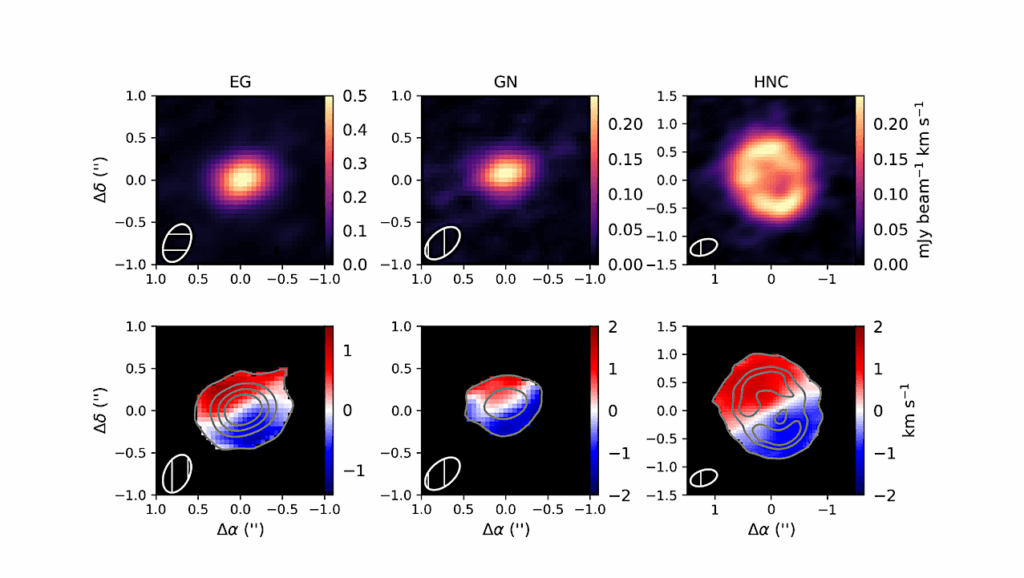Detection Of Dimethyl Ether In The Central Region Of The MWC 480 Protoplanetary Disk
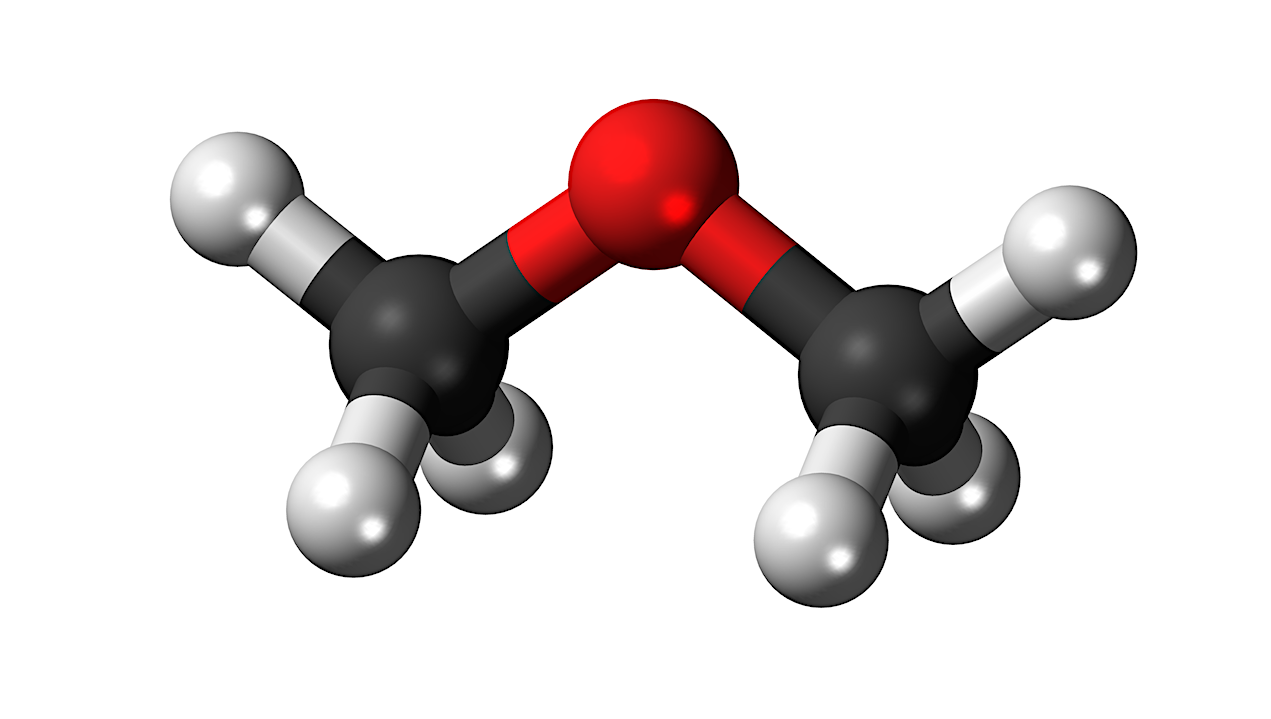
Characterizing the chemistry of complex organic molecules (COMs) at the epoch of planet formation provides insights into the chemical evolution of the interstellar medium (ISM) and the origin of organic materials in our Solar System. We report a detection of dimethyl ether (CH3OCH3) in the disk around the Herbig Ae star MWC 480 with the sensitive Atacama Large Millimeter/submillimeter Array observations. This is the first detection of CH3OCH3 in a non-transitional Class II disk.
The spatially unresolved, compact (≲25 au in radius) nature, the broad line width (∼30 km s−1), and the high excitation temperature (∼200 K) indicate sublimation of COMs in the warm inner disk.
Despite the detection of CH3OCH3, methanol (CH3OH), the most abundant COM in the ISM, has not been detected, from which we constrain the column density ratio of CH3OCH3/CH3OH ≳7. This high ratio may indicate the reprocessing of COMs during the disk phase, as well as the effect of the physical structure in the inner disk. We also find that this ratio is higher than in COM-rich transition disks recently discovered.
This may indicate that, in the full disk of MWC 480, COMs have experienced substantial chemical reprocessing in the innermost region, while the COM emission in the transition disks predominantly traces the inherited ice sublimating at the dust cavity edge located at larger radii (≳20 au).

Summary of the observations toward the MWC 480 disk. Top: 1.03 mm continuum image (left) and velocity-integrated intensity maps of (tentatively) detected COMs, CH3OCH3 and CH3OCHO (others). The peak S/N of the right three maps are 5.4, 12, and 6.0, respectively. The white ellipse in the lower left corner indicates the synthesized beam. A scale bar of 50 au is shown in the lower right corner. Middle: Spectra extracted in a circular aperture with 0. ′′6 diameter toward the disk center (gray), overlaid with the best-fit spectral model for CH3OCH3 (blue), CH3OCHO (orange), and sum of both (black). The semitransparent error bars represent the associated 1σ uncertainties. The frequency ranges removed from the fit due to the atmospheric absorption or contamination from other molecular lines are shaded by gray. Bottom: Zoom-in view of the middle panel in the vicinity of the (tentatively) detected features but with the spectral axis in velocity with respect to a reference frequency of 299.11170 GHz (left), 299.89209 GHz (middle), and 300.05338 GHz (right), respectively. The vertical line segments in the bottom of the panels indicate the center and the relative strength (at 200 K) of each transition.
Yoshihide Yamato, Yuri Aikawa, Viviana V. Guzmán, Kenji Furuya, Shota Notsu, Gianni Cataldi, Karin I. Öberg, Chunhua Qi, Charles J. Law, Jane Huang, Richard Teague, Romane Le Gal
Comments: 16 pages, 6 figures, accepted for publication in ApJ
Subjects: Earth and Planetary Astrophysics (astro-ph.EP); Solar and Stellar Astrophysics (astro-ph.SR)
Cite as: arXiv:2407.21518 [astro-ph.EP] (or arXiv:2407.21518v1 [astro-ph.EP] for this version)
Submission history
From: Yoshihide Yamato
[v1] Wed, 31 Jul 2024 10:39:26 UTC (3,458 KB)
https://arxiv.org/abs/2407.21518
Astrobiology,


